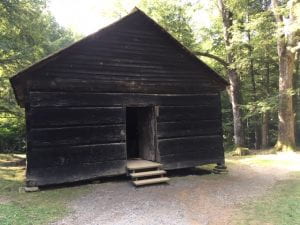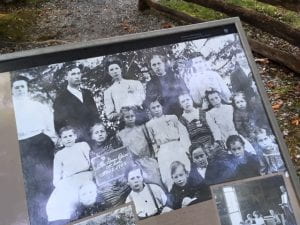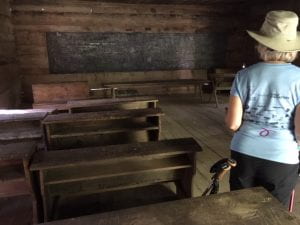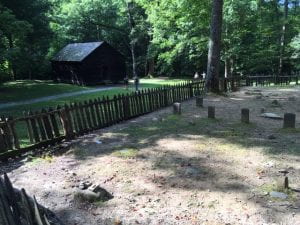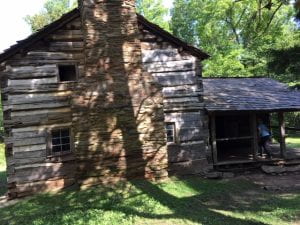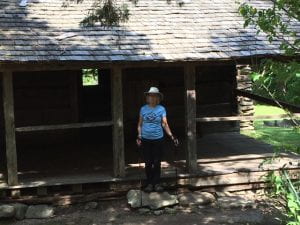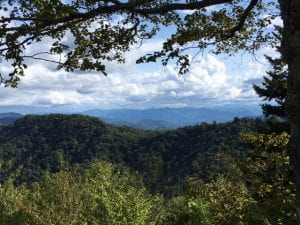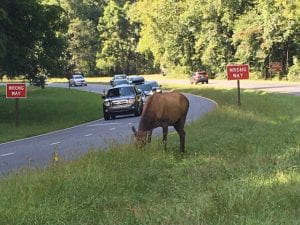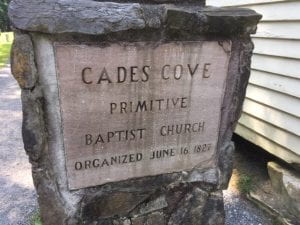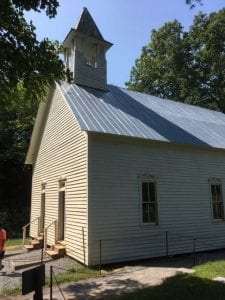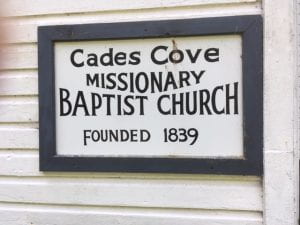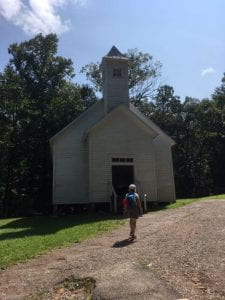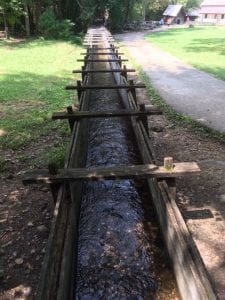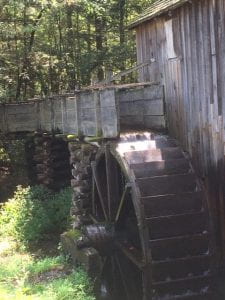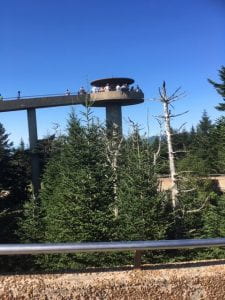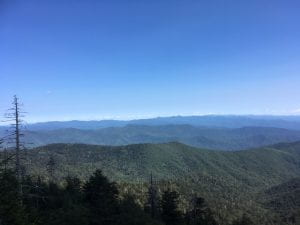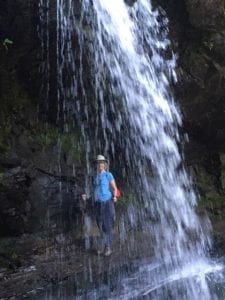The Walker Sisters’ Place was the fourth of “6 Short Hikes” recommended on a blog by Vicky Reddish on the Great Smoky Mountains National Park Website. Before Friday we had taken the Laurel Falls Trail, the Clingman Dome Trail, and the Grotto Falls Trails, all scenic and within a 2-3 mile roundtrip.
The Walker Sisters Place hike offered a creek alongside; a school house and cemetery; and a family tradition of almost a hundred years. The Little Brier Gap Trail was narrow and criss-crossed with protruding roots, arriving at a schoolhouse at least a mile from the Park picnic area and a mile further to the Walker Sisters Place.
Below the interior and exterior of the school house is pictured, along with a longer shot from the cemetery and a class picture of 1908. The cemetery features a number of Walkers. John and Margaret Walker had eleven children, four boys who made their fortune somewhere else and seven daughters, of which only one married.
The other six remained in the home until the 1960’s. Nancy passed away in the 1930’s and the other sisters stayed while the National Park was built around them. The Park land was acquired in the 1930’s, and the sisters benefited at first. They sold souvenirs and told stories that made them a Park attraction. In their older years, the attention became exhausting, and they asked for privacy. When the last sister died in the 1960’s, the land was deeded to the National Park service. Two views of the house are displayed below. You can climb a ladder to the second floor, but there’s nothing but a bare floor and a single window to see.
Plenty more to hike and see on a return visit to the Great Smoky Mountains National Park. There’ s Rainbow Falls, the Alum Cave Bluffs, the Hen Wallow Falls and the Blue Ridge Parkway. Everywhere you drive there is a mountain vista and a turn-off to park and take it in. It leaves you with the sense of awe you know all Creation deserves. Here you can’t miss it.
Several days after returning to Chesterfield we got another taste of that quiet awe, when a fawn came to drink at our bird bath, and then feasted on our flower bed. Most of the flowers were past, but they left enough residue to appeal to a deer. The fawn lingered at least fifteen minutes, reassuring us that our home was her home as well. It still shoots me full of wonder to get that close to the wild.

